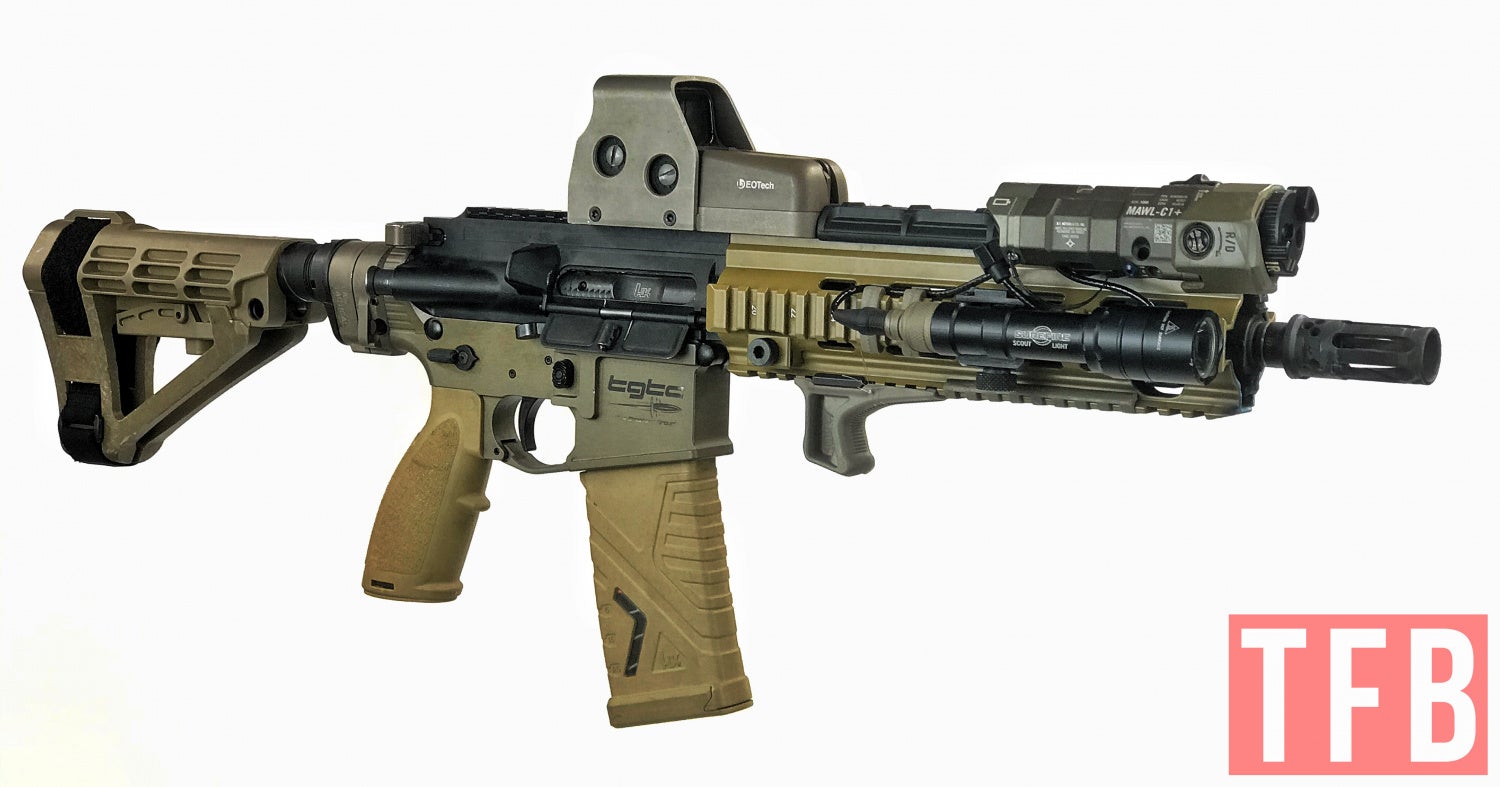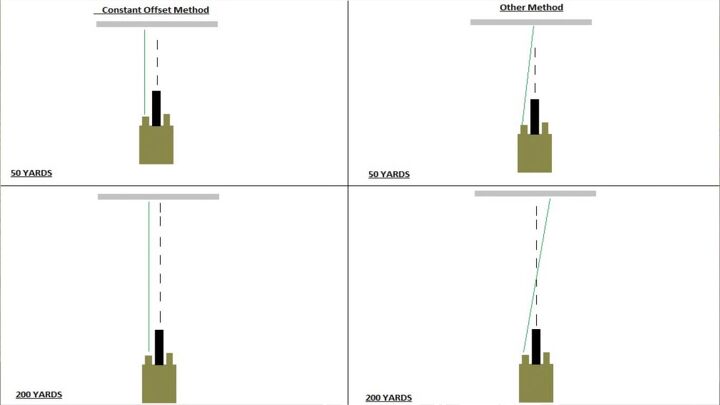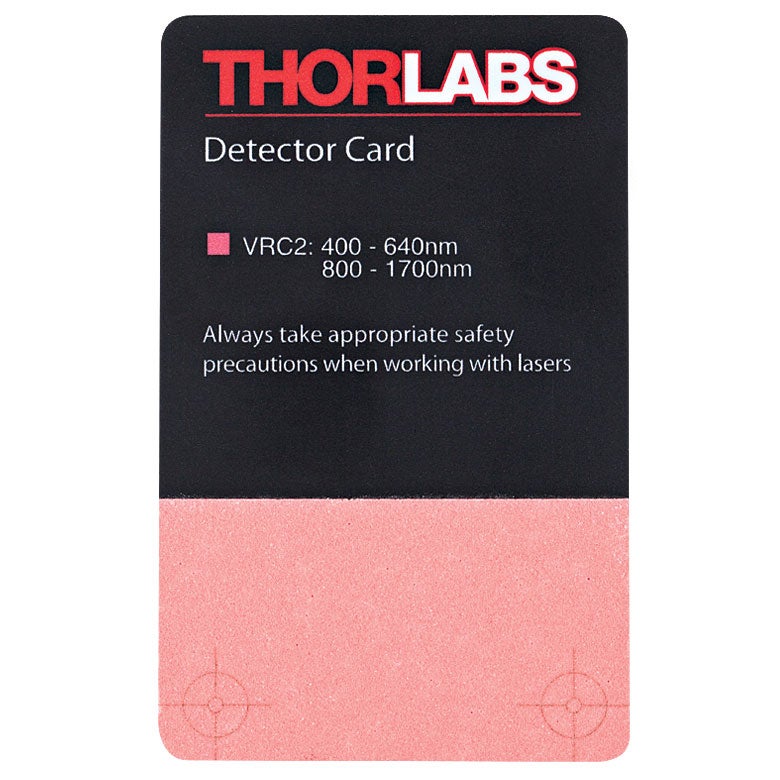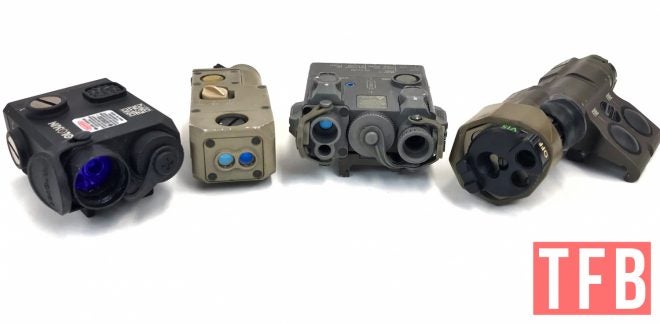So you bought a ninja laser to do ninja stuff in the dark. I am talking about a weapon mounted infrared laser. Humans cannot see the near infrared (NIR) wavelength without the help of night vision whether it is analog or digital. So how do you zero your invisible laser? There are a couple of ways to do this. Some are easier than others but that depends on you and your preferences.
Step 1: Zero Your Day Optic

This seems extremely basic but I cannot stress this enough, ZERO YOUR DAY OPTIC. I have seen people struggle at simple night matches trying to hit a decent sized steel target at less than 100 yards away. When I asked these shooters “Why are you missing?” they replied with some excuse of not being able to go to the range to properly zero or they thought zeroing their laser in their home would be good enough. If your day optic is not zeroed then how do you expect your ninja laser to be zeroed?
While it seems elementary, you need to have a solid foundation and that is having a zeroed optic on your rifle. Back ups for your back ups. In this case, the red dot is your back up for your laser. Passive aiming through red dots should be your home when shooting with night vision. Just like shooting in the day time with the same rifle and optic setup you need to get comfortable with it while using night vision.
Step 2: Zero Your Invisible Laser

This step should be easy but some people make it more complicated than it needs to be. Richard L. posted an article about Telluric IR laser targets. He talks about the two ways to zero your invisible laser. Parallel or converging zero. We will look at the parallel laser zero first.
Parallel Zero
Below is the target provided by B.E. Meyers when you buy a MAWL-C1+. It helps you zero your invisible laser using the visible laser and your lower 1/3 cowitness optic.

The target is set at 20 meters and you can easily see the green visible laser in the day time at that distance. Shoot the target to confirm. However, there is a problem with this target. It does not work if you are not running a lower 1/3 cowitness red dot.
TNVC has a similar school of thought with what they call the “constant offset method”. Which is just another way of saying parallel zero. Here is a screenshot from the video above.

According to their video, if you zero your laser at 50 yards then it will be off at 200 yards. While this is true, this is not how I zero my lasers.
Converging Zero
I prefer a converging zero because I find it the easiest to perform. This only works if your primary aiming device, your day optic, is zeroed properly. If your optic is zeroed then you can move your laser from one gun to the other and quickly rezero the laser using a converging zero method. I adopt a 50/200 yard zero. That is my preference. The reason I chose this zero for my optic is so that I can zero my IR laser to converge at 200 yards. NOT at 50 yards. There is no need to confirm my zero because my optic is tried and trued. I know I can trust my day optic to hit POA/POI at 200 yards all day every day. And as long as my invisible laser pointer points a the same spot at 200 yards then I am good out to 400 yards. I’m sure you are asking yourself “Wait . . . what? 400 yards?”
Yes. 400 yards and here is why.

It is a simple matter of geometry. Take a look at the examples below. The laser vs bore offset is at most 2 inches.





So what does that mean for a converging zero? Nothing. Don’t worry about it. At point blank range your laser offset will be only 2 inches off. From your shooting point of view, at point blank range, your laser will be two inches high and right (depending on your laser). In this case, we will use the DBAL-A2 style laser. So at 400 yards, your laser will be two inches low and to the left. But at 200 yards it will be right where your red dot hits. Everything within 200 yards will be slightly offset to the right and the offset gets bigger the closer your target is. But remember, that offset is only a spread of 2 inches. As long as your rifle is a sub-MOA or even a 1 MOA you will be fine. You have more to worry about with regards to your shooting fundamentals and ammo selection than you do about your invisible ninja laser.
Move The Invisible Dot To The Visible One
Now comes the tricky part (not really). How do you converge your IR laser to your red dot? If you have a slaved visible laser then you can use that. But if your laser is only infrared then you gotta do it at night with night vision. While wearing night vision goggles, go point your empty rifle at something 200 yards away at night, look through your optic and move your IR laser to that same spot your red dot is aimed at. I prefer the DBAL since it does not require tools to adjust the pointer or illuminator.
I don’t normally have my MAWL-C1+ positioned so far out but I wanted to illustrate the minor inconvenience of the elevation adjustment which is under the head. If you have a weapon light directly underneath then it can block that adjustment unless you position the MAWL forward or relocate your light elsewhere.

Final Thoughts On Zeroing Your Invisible Laser
Zeroing your laser should not be a taxing event or something that needs to be overthought. It is a laser. It is not a precise aiming device, to begin with. Lasers tend to bloom when you see them with night vision. So already it can obscure your target a little bit. Also, there is the aspect of practicality. How far are you really going to be shooting off the shoulder with a carbine using a 1x power night vision goggle? According to Greenline Tactical in their Night Fighters night vision class, positive ID on a human target with night vision goggles is only 170 yards. That means you can positively ID one person from another person and determine which one is your target. Obviously, that changes depending on your target. Both the parallel zero and converging zero will have ballistic drop issues to deal with. You need to know your holds for shooting out to 400 yards with a red dot, well the same applies with the laser.

There is an industrial solution to seeing your infrared laser in the day time. They are called Laser Viewing Cards or Detector Cards. They are somewhat pricey at $87.39. But it somehow turns an infrared laser into visible.
How well this would work in actual daylight, I do not know. They are mainly used for laboratories setting up infrared lasers and precise aiming is critical. However I do not think they are shooting their laser over long distances, this is for indoor use.
Whatever you chose to do, parallel or converging, don’t overthink it. After all, it is just a laser. Try flexing your handguard, you may notice some POA shift so now you got to deal with that issue. Lasers do make it easier to aim when shooting with night vision but don’t treat them as precision instruments. Think about your engagement distances and what you are shooting. If it fails, go back to shooting through the tube (aiming with your optic).
We are committed to finding, researching, and recommending the best products. We earn commissions from purchases you make using the retail links in our product reviews. Learn more about how this works.
 Your Privacy Choices
Your Privacy Choices
